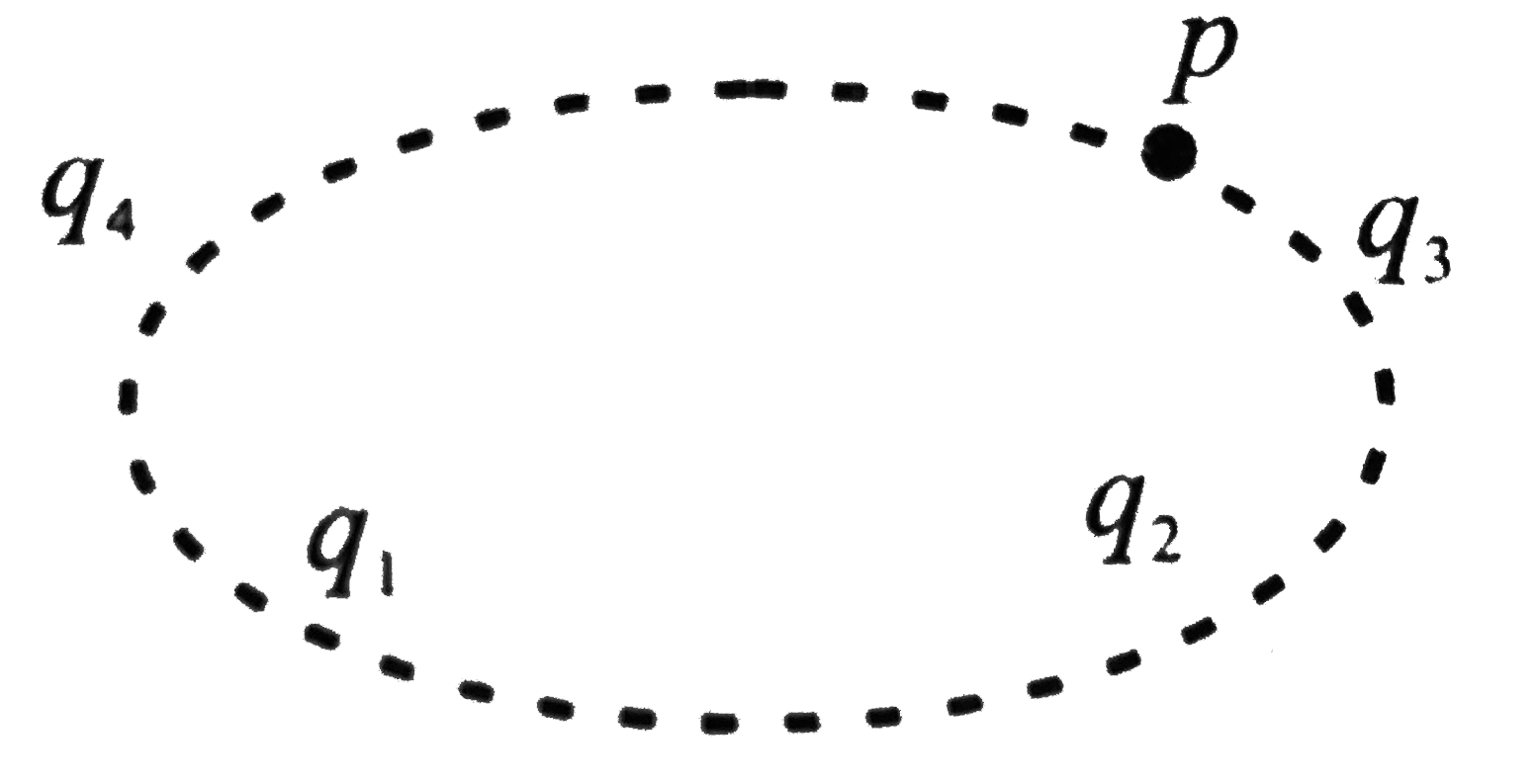Coulomb's law is analogous to
Charge conservation law
Newton's second law of mation
Law of conservation of energy
Newton's law of gravitation
The correct Answer is:D
To determine what Coulomb's law is analogous to, we can follow these steps:
Step 1: Understand Coulomb's Law
Coulomb's law describes the electrostatic force between two point charges. It states that the force (F) between two charges (q1 and q2) is directly proportional to the product of the magnitudes of the charges and inversely proportional to the square of the distance (r) between them. Mathematically, it is expressed as:
F=kq1q2r2
where k is Coulomb's constant.
Step 2: Identify the Components of Coulomb's Law
- Directly Proportional: The force is directly proportional to the product of the charges (q1 and q2).
- Inversely Proportional: The force is inversely proportional to the square of the distance between the charges (r2).
Step 3: Find an Analogous Law
To find an analogous law, we look for another fundamental force that has a similar relationship between its components. Newton's law of gravitation describes the force between two masses (m1 and m2) and is given by:
F=Gm1m2r2
where G is the gravitational constant.
Step 4: Compare the Two Laws
- Directly Proportional: Just like Coulomb's law, the gravitational force is directly proportional to the product of the two masses (m1 and m2).
- Inversely Proportional: Both laws are inversely proportional to the square of the distance between the two objects.
Conclusion
Since both Coulomb's law and Newton's law of gravitation share the same mathematical form and relationship between their respective quantities, we conclude that:
Coulomb's law is analogous to Newton's law of gravitation.
Final Answer
Coulomb's law is analogous to Newton's law of gravitation.
---
Coulomb's law describes the electrostatic force between two point charges. It states that the force (F) between two charges (q1 and q2) is directly proportional to the product of the magnitudes of the charges and inversely proportional to the square of the distance (r) between them. Mathematically, it is expressed as:
F=kq1q2r2
where k is Coulomb's constant.
- Directly Proportional: The force is directly proportional to the product of the charges (q1 and q2).
- Inversely Proportional: The force is inversely proportional to the square of the distance between the charges (r2).
To find an analogous law, we look for another fundamental force that has a similar relationship between its components. Newton's law of gravitation describes the force between two masses (m1 and m2) and is given by:
F=Gm1m2r2
where G is the gravitational constant.
- Directly Proportional: Just like Coulomb's law, the gravitational force is directly proportional to the product of the two masses (m1 and m2).
- Inversely Proportional: Both laws are inversely proportional to the square of the distance between the two objects.
Since both Coulomb's law and Newton's law of gravitation share the same mathematical form and relationship between their respective quantities, we conclude that:
Coulomb's law is analogous to Newton's law of gravitation.
Coulomb's law is analogous to Newton's law of gravitation.
Similar Questions
Knowledge Check
The Bohr model for the H-atom relies on the Coulomb's law of electrostatics . Coulomb's law has not directly been varified for very short distances of the order of angstroms. Suppos-ing Coulomb's law between two oppsite charge +q1,−q2 is modified to ∣∣→F∣∣=q1q2(4πε0)r21r2,r≥R0
=q1q2(4πε0)r21R20(R0r)ε,r≤R0
Calculate in such a case , the ground state enenergy of H-atom , if ε=0.1,R0=1ÅA−11.4B−17.3C5.9D−23.2
A food vacuole of Amoeba is analogous to
View SolutionThe megasporophyll of vascular plants is analogous to which structure in angiosperms
View SolutionAssume that there is no repulsive force between the electrons in an atom but the force between positive and negative charges is given by Coulomb's law as usual . Under such circumtences, calculate the ground state energy of a He-atom.
View SolutionCoulomb's law states that the electric force becomes weaker with increasing distance. Suppose that instead, the electric force between two charged particles were independent of distance. In this case, would a neutral insulator still be attracted towards the comb.
View SolutionThe law goverening electrostatics is coulomb's law.In priciple coulomb's law can be used to compute electric field due to any charge configuation .In pracitce however it is a formidable task to compute electric field due to uniform charge distributions .For such cases Gauss proposed a theorem which states that
∮¯¯¯E.¯¯¯¯ds=qε0
where ds is an element of area directed across the outward normal for the surface at every point .The integral is called electric flux.Any convenient surface that we choose to evalute the surface integral is called the Gaussian surface.
The SI unit of electric flux is
View SolutionGauss's law and Coulomb's law , although expressed in different forms , are equivalent ways of describing the relation between charge and electric field in static conditions . Gauss's law is ε0ϕ=qencl,when q(encl) is the net charge inside an imaginary closed surface called Gaussian surface. The two equations hold only when the net charge is in vaccum or air .
A Gaussian surface encloses two of the four positively charged particles. The particles that contribute to the electric field at a point P on the surface are

View SolutionGauss's law and Coulomb's law , although expressed in different forms , are equivalent ways of describing the relation between charge and electric field in static conditions . Gauss's law is ε0ϕ=qencl,when qencl is the net charge inside an imaginary closed surface called Gaussian surface. The two equations hold only when the net charge is in vaccum or air .
The net flux of the electric field through the surface is
View Solution
